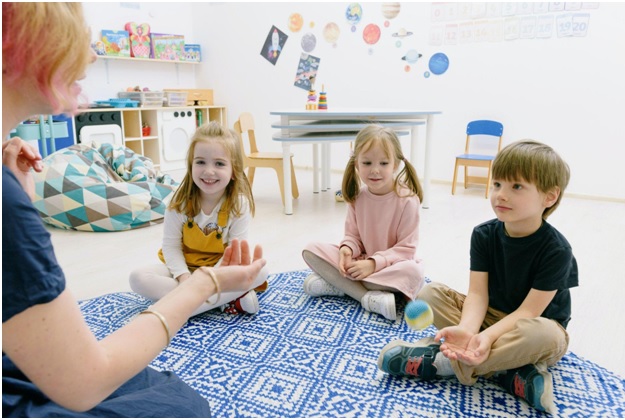
Discover the Secrets to Nurturing Discipline: Unveiling the Effective Approach to Child Care’s Positive Guidance
As parents, we all want our children to grow up with a strong sense of discipline, respect, and self-control. However, understanding how to effectively instill these qualities in young children can sometimes be challenging. That’s where child care programs play a crucial role in providing a nurturing environment that promotes positive behavior and supports children’s emotional, social, and cognitive development.
In this article, we will delve into the secrets of fostering discipline in child care settings. We will explore the importance of positive guidance in child care responsibilities, discuss effective strategies used by child care providers, and provide practical tips for parents to reinforce discipline at home. By understanding and implementing these strategies, child care providers can create a supportive and nurturing environment that promotes positive behavior and fosters children’s social and emotional development.
The Role of Positive Guidance in Child Care
Positive guidance is an approach used by child care providers to encourage desirable behavior, teach problem-solving skills, and establish a respectful and inclusive environment. Unlike traditional disciplinary methods that rely on punishment, positive guidance focuses on teaching children appropriate behavior and fostering their emotional well-being. Child care centers that adopt this approach creates an environment where children feel safe, supported, and motivated to make positive choices.
Effective strategies used in child care settings
Building strong relationships
Developing strong and trusting relationships with children is essential for positive guidance. Caregivers take the time to get to know each child individually, actively listen to their thoughts and feelings, and demonstrate genuine care and interest.
Setting clear expectations
Clear and consistent expectations are crucial for promoting positive behavior. Caregivers communicate the expectations clearly, using age-appropriate language and visual cues to help children understand what is expected of them.
Using positive reinforcement
Recognizing and reinforcing positive behavior is a powerful tool for positive guidance. Caregivers provide specific praise, rewards, and encouragement when children exhibit the desired behavior, reinforcing their efforts and motivating them to continue making positive choices.
Redirection and problem-solving
Instead of focusing solely on discipline, caregivers guide children through redirection and problem-solving. When challenging behavior arises, caregivers help children identify alternative choices and find solutions, teaching them valuable problem-solving skills.
Teaching and modeling appropriate behavior
Caregivers play a vital role in modeling positive behavior and providing guidance on appropriate conduct. Through observation and instruction, caregivers demonstrate desired behaviors and help children understand the impact of their actions on themselves and others.
Promoting a positive and supportive environment
Creating an environment that is safe, inclusive, and supportive is crucial for positive guidance. Caregivers foster positive relationships among children, encourage cooperation and empathy, and provide opportunities for children to engage in age-appropriate activities that promote their development.
Creating a Supportive Environment
A nurturing and supportive environment is essential for promoting discipline in child care settings. Child care providers employ various strategies to create an environment that encourages positive behavior and fosters self-discipline.
- Building positive relationships: Child care providers establish strong relationships with each child, promoting trust, respect, and open communication. By developing meaningful connections, children feel secure and more inclined to follow guidance and instructions.
- Individualized approaches: Recognizing that each child is unique, child care providers tailor their guidance techniques to meet the specific needs and temperament of each child. This personalized approach ensures that discipline strategies are effective and respectful.
- Consistency and predictability: Child care centers maintain consistent routines, schedules, and rules. This consistency provides a sense of security and predictability for children, helping them understand expectations and develop self-discipline.
- Positive reinforcement: Child care providers utilize positive reinforcement techniques such as praise, rewards, and acknowledgment to reinforce desirable behavior. By focusing on positive actions, children are motivated to continue displaying appropriate behavior.
Creating a supportive environment in child care is crucial for promoting children’s holistic development, well-being, and love for learning. By prioritizing positive relationships, safety, inclusivity, clear expectations, and emotional support, caregivers can create a nurturing and empowering.
Collaborating with Parents: The Home-Child Care Connection
For discipline to be effective, it is essential to establish a strong partnership between child care providers and parents. Collaboration between these two key stakeholders ensures consistency in discipline strategies and reinforces the development of discipline skills at home.
Open and regular communication: Child care providers maintain open lines of communication with parents, sharing information about a child’s progress, behavior, and any concerns. Regular meetings or newsletters provide opportunities for parents and child care providers to discuss discipline strategies and align their approaches.
Parent education and involvement: Child care centers may offer workshops or resources to educate parents about positive guidance techniques, discipline strategies, and ways to reinforce discipline at home. Parent involvement in their child’s learning and behavior fosters a consistent approach to discipline across settings.
Consistency in expectations: Child care providers and parents work together to establish consistent expectations and rules for children. This consistency allows children to understand that behavior expectations apply both at home and in the child care setting, reinforcing their understanding of appropriate conduct.
Conclusion
Nurturing discipline and positive guidance in child care settings is crucial for the holistic development of children. By adopting a positive guidance approach, child care providers create an environment that supports children’s emotional well-being, social skills, and self-discipline. Strategies such as setting clear expectations, modeling positive behavior, and encouraging problem-solving empower children to make positive choices.
Parents play a vital role in reinforcing discipline at home by collaborating with child care providers, maintaining open communication, and aligning their approaches. By working together, parents and child care providers create a consistent and supportive environment that promotes the development of discipline skills in children.
Remember, discipline is not about punishment but about teaching children valuable life skills and values. When children feel supported, respected, and guided, they can unlock their potential and thrive in all aspects of their lives.
By embracing the secrets of nurturing discipline and positive guidance in child care, we can help our little ones develop into confident, respectful, and responsible individuals, ready to conquer the world.


